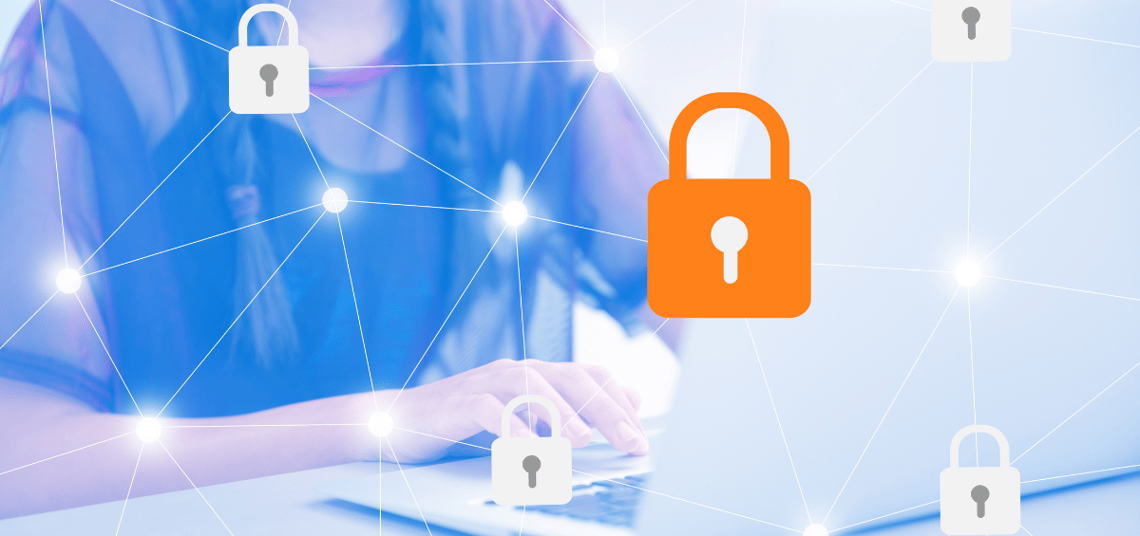In today’s hyper-connected society, the fundamental principle for a company's cybersecurity is no longer the "where" the resources are located but is now focused on the "who" accesses these resources. Stolen user’s credentials are among the most common targets for hackers to gain entry into organizations’ networks through malware, phishing, and ransomware attacks. In the digital era it is fundamental to pay full attention to digital identity management: that is why digital users need a correct Identity and Access Management (IAM) policy, and companies should safeguard their most valuable resources.
Identity? What does it mean?
In the digital world in which we are living, all of us have and manage our own digital identity. More specifically, our identities are manifested in the form of attributes, entries in a database that define us within a given system. The trend of online services is to collect all these attributes to be more useful, for example, to create a customized user experience, based on the data gathered about our static attributes, defined at the time of registration, or dynamic during the use of the service.
Attributes differentiate us from other users within the same system; these attributes could be an email address, a phone number, any data that can confirm our identity.
Identity Management vs Access Management
Identity management (ID management) refers to the organizational process for identifying, authenticating and authorizing individuals or groups of people to have access to applications, systems or networks by associating user rights and restrictions with established IDs. Customer Onboarding is an example of a digital solution to manage digital identity.
Identity management includes authenticating users and determining if they're allowed access to particular systems. ID management works hand-in-hand with identity access management systems. The main difference is that identity management is focused on authentication, while access management on authorization. More specifically:
- Identity management deals with the management of attributes user- related.
- Access management tries to evaluate the attributes based on defined policies and make binary decisions.
Digital Identity Management
A user digital identity is established when registered in a system. During this process, specific attributes are collected and stored in a database. The registration process and the number of attributes to process can be entirely different depending on the type of digital identity that is intended to be granted. The electronic identity (eID) issued by an official center will use a complex process of compilation and treatment, while the registration in a social network can be done with utterly false identity attributes and therefore not verified.
The process of identity management aims to deal with the attributes that define the person. Therefore, those responsible for creating, updating or even deleting attributes related to our registry can be profiles as diverse as the director of human resources of the company, the IT administrator, the service manager of an e-commerce site, etc...
What about authentication?
Authentication is a process where the user’s identity is established. There are many ways to authenticate a user. At the lowest level, the user can authenticate with a basic login process by using their name. At the other end, the user could log in to the service using their electronic identity issued by the government (Electronic Identification Card or similar).
Identity Access Management: what does it mean?
Identity Access Management (IAM) is a framework of policies, processes, and technologies that enable organizations to better manage digital identities, control and verify user access to critical corporate information. By assigning users with specific roles and ensuring they have the right level of access to corporate resources and networks, the role of IAM is to reinforce Cybersecurity and user experience, enables better business outcomes, and increases the viability of mobile and remote working and cloud adoption.
Which are the main IAM skills?
- Verify and authenticate users according to their roles and contextual data such as geography, time of day, or trusted networks
- Capture and record user login events
- Manage and provide visibility of the business’s user identity database
- Manage the assignment and removal of users’ access privileges
- Enable system administrators to manage and prevent user access and monitor changes in user privileges
- Automatic De-Provisioning: prevent security risks when employees depart a business
Which are the IAM Tools?
An IAM solution is composed of different components and systems
1. Single Sign-On
Single sign-on (SSO) is a form of access control that allows users to authenticate with multiple applications or systems using just one login and one set of credentials. The application or site that the user attempts to access relies on a trusted third party to verify the user reliability, the advantages are:
- Enhanced user experience
- Reduced number of password accesses
- Streamline password management
- Minimized security risks for customers, partners, and vendors
- Limited credential usage
- Improved identity and data protection
2. Multi-Factor Authentication
Multi-factor authentication verifies a user's digital identity by requiring them to enter multiple credentials and provide various factors such as:
- Something the user knows: a password
- Something the user has: a token or code (OTP) sent to the user via email or SMS, to a hardware token generator, or to an authenticator application installed on the user’s smartphone
- Specific requirement to the user, such as biometric recognition (proof of liveness, proof of voice, etc…)
3. Privileged Access Management
Privileged access management prevents any Cyberattack by assigning higher permission levels to accounts with access to critical corporate resources and administrator-level controls. These accounts are high-value targets for cybercriminals and, as such, high risk for organizations.
4. Risk-Based Authentication
When a user attempts to log in to an application, a risk-based authentication solution looks at contextual features such as their current device, IP address, location, or network to assess the risk level.
Then, it will decide if to enable users to have access to the application, prompt them to submit an additional authentication factor, or deny them access. This allows businesses to immediately identify further security risks, gain deeper insight into user context, and increase security with additional authentication factors.
5. Data Governance
Data governance is the process that enables companies to manage the availability, integrity, security, and usability of their data. This involved the use of data policies and data usage requirements to ensure that data is consistent, reliable, and does not get misused. Data governance is important within an IAM solution as artificial intelligence and machine learning tools rely on businesses having quality data.
6. Federated Identity Management
Federated identity management is an authentication-sharing procedure whereby businesses share digital identities with trusted partners. This enables users to exploit the services of multiple partners using the same credentials.
7. Zero-Trust
A Zero-Trust approach changes traditional enterprises' idea of trusting everyone or everything that is connected to a network or behind a firewall. This view is no longer acceptable, given the adoption of the cloud and mobile devices extending the workplace beyond the four walls of the office and enabling people to work remotely.
IAM Benefits:
- Secure access: Extending networks to more employees, customers, partners or other stakeholders provides greater efficiency and productivity, but it also increases the risk. An IAM solution supports businesses to extend access to their apps, networks, and systems on-premises and in the cloud without compromising security.
- Reduced help desk requests: An IAM solution automatize user’s access by avoiding submitting passwords. This enables users to log-in to their profile through a quick and easy procedure, to verify their identity without bothering system admins.
- Risk decrease: reduced risk of internal and external data breaches. This is crucial as hackers aim to steal credentials as a key method for gaining access to corporate networks and resources.
- Meeting compliance: IAM helps a business to meet their compliance needs mostly in a scenario of increasingly stringent data and privacy regulations.
Euronovate has the right solutions to improve digital identity and access management.
If you want to find out more about the advantages or technical features of our services, please contact us to arrange a demo or to ask for more information.




